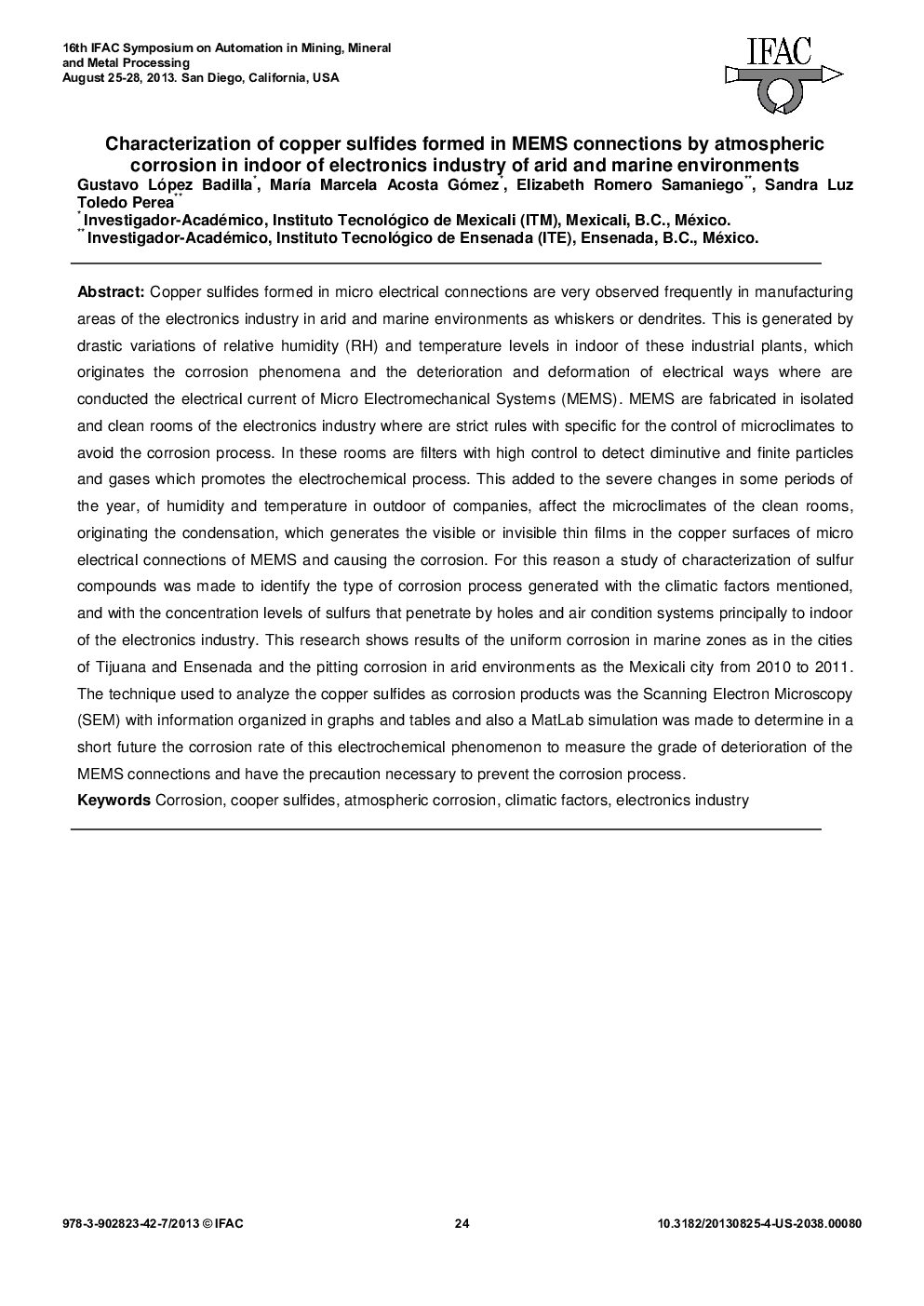| کد مقاله | کد نشریه | سال انتشار | مقاله انگلیسی | نسخه تمام متن |
|---|---|---|---|---|
| 709313 | 892065 | 2013 | 7 صفحه PDF | دانلود رایگان |

Copper sulfides formed in micro electrical connections are very observed frequently in manufacturing areas of the electronics industry in arid and marine environments as whiskers or dendrites. This is generated by drastic variations of relative humidity (RH) and temperature levels in indoor of these industrial plants, which originates the corrosion phenomena and the deterioration and deformation of electrical ways where are conducted the electrical current of Micro Electromechanical Systems (MEMS). MEMS are fabricated in isolated and clean rooms of the electronics industry where are strict rules with specific for the control of microclimates to avoid the corrosion process. In these rooms are filters with high control to detect diminutive and finite particles and gases which promotes the electrochemical process. This added to the severe changes in some periods of the year, of humidity and temperature in outdoor of companies, affect the microclimates of the clean rooms, originating the condensation, which generates the visible or invisible thin films in the copper surfaces of micro electrical connections of MEMS and causing the corrosion. For this reason a study of characterization of sulfur compounds was made to identify the type of corrosion process generated with the climatic factors mentioned, and with the concentration levels of sulfurs that penetrate by holes and air condition systems principally to indoor of the electronics industry. This research shows results of the uniform corrosion in marine zones as in the cities of Tijuana and Ensenada and the pitting corrosion in arid environments as the Mexicali city from 2010 to 2011. The technique used to analyze the copper sulfides as corrosion products was the Scanning Electron Microscopy (SEM) with information organized in graphs and tables and also a MatLab simulation was made to determine in a short future the corrosion rate of this electrochemical phenomenon to measure the grade of deterioration of the MEMS connections and have the precaution necessary to prevent the corrosion process.
Journal: IFAC Proceedings Volumes - Volume 46, Issue 16, 2013, Pages 24-30